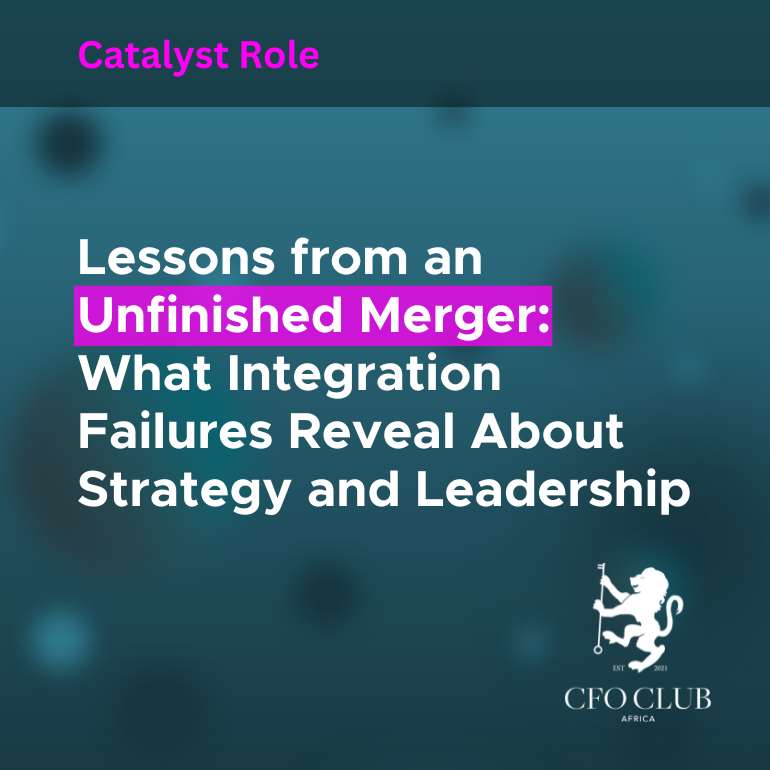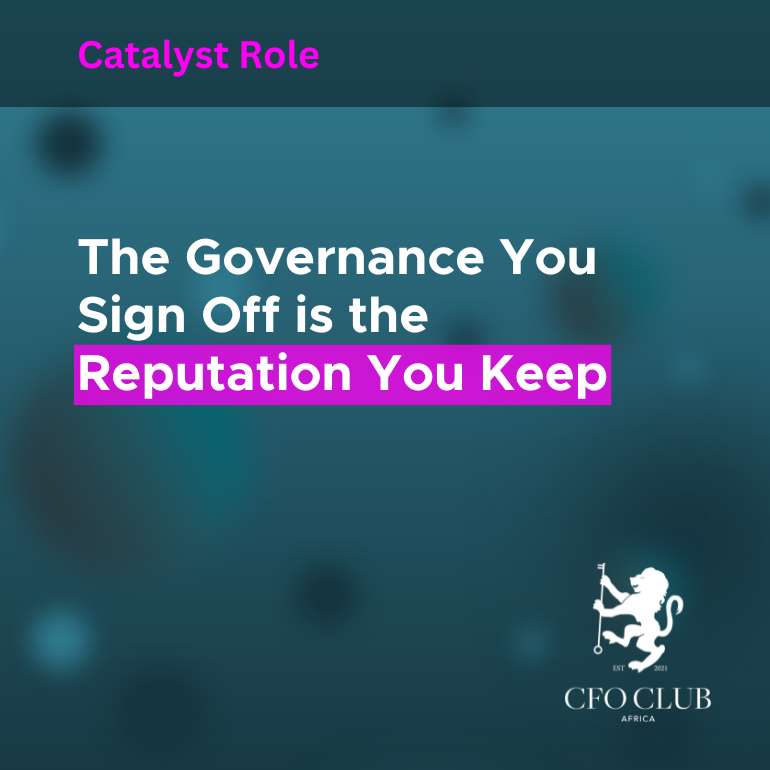Lessons from an Unfinished Merger: What Integration Failures Reveal About Strategy and Leadership
Lessons from an Unfinished Merger: What Integration Failures Reveal About Strategy and Leadership
When two companies merge, the strategic rationale often appears convincing. The promise of economies of scale, an expanded market footprint, operational synergies, and a stronger competitive position tends to dominate merger announcements. However, while the deal may look sound on paper, the real challenge lies in what follows, integration.
The reality is that many mergers stall long before the benefits are realised. They falter not because the business case was incorrect, but because leadership underestimated the complexity of aligning two organisational systems, cultures, and priorities. For Chief Financial Officers (CFOs) navigating these waters, unfinished mergers provide some of the most instructive and sobering lessons in strategic execution.
The Danger of Declaring Success Too Early
One of the most common errors in any merger is assuming that the job is done once the legal and financial transaction is complete. In truth, integration is a long-term process that extends well beyond systems consolidation or organisational restructuring. It involves reshaping behaviours, resetting performance expectations, and creating a shared culture that aligns around a new strategic identity.
There have been instances where, years after the merger, companies discovered that their systems were still not integrated. Business units operated in silos, and cost centres had not been properly consolidated. Leadership teams could not reliably distinguish between profitable and loss-making divisions. The absence of integrated reporting, along with informal internal agreements made during the merger process, only added to the confusion. As a result, financial transparency suffered, and value creation stalled.
When Operating Models Inhibit Progress
During mergers, there is often pressure to centralise functions. The intent is to eliminate duplication, cut costs, and standardise processes. In theory, centralisation enhances efficiency. In practice, however, it can dilute accountability and create internal friction.
In some organisations, centralised models led to constant delays, as departments fought to establish priorities across disparate business units. Product development slowed, strategic alignment suffered, and executives spent more time resolving disputes than driving innovation. While centralisation may make sense at scale, it can be deeply counterproductive if it strips business leaders of autonomy and responsiveness. CFOs need to remain vigilant. When the operating model starts to inhibit decision-making or performance, it is a signal to reassess and potentially reintroduce decentralised authority.
The Advantage of External Perspective
Appointing an external CFO in the wake of a merger often proves beneficial. An external executive is not burdened by legacy decisions, internal loyalties, or unspoken obligations. They are able to approach the organisation with objectivity and can ask the difficult questions that internal stakeholders might avoid.
In more than one organisation, it took an outsider to unpack flawed cost allocations, identify duplication, and remove legacy assumptions about profitability. Once this clarity was restored, the leadership could begin making rational, data-driven decisions about where to invest and what to discontinue. Without this transparency, organisations remain stuck in a fog of ambiguity, unable to measure success accurately.
Ending Projects That Do Not Deliver
Transformation often comes with a flurry of new initiatives. These may include experimental projects, innovation hubs, or digital strategies launched with great enthusiasm. Yet many of these ventures fail to deliver real results. The popular phrase “fail fast and learn” rarely holds true in large organisations, where projects tend to fail slowly and consume substantial resources along the way.
CFOs must apply financial discipline and remain firm in their oversight. If an initiative does not achieve its revenue or efficiency targets within a defined period, it should be stopped. Holding on to underperforming projects in the hope that they will eventually turn around can be a costly mistake. Cutting losses decisively allows the organisation to redirect its focus and capital toward what is working.
Communication and Celebration Build Momentum
The importance of communication during and after a merger cannot be overstated. Finance leaders must go beyond reporting figures. They must explain decisions clearly, communicate the rationale behind structural changes, and help employees and stakeholders understand the broader business context.
When job losses are unavoidable, it is better to be transparent. People are often able to deal with difficult realities if they are given respect and clear information. At the same time, it is important to highlight progress. Celebrating quarterly improvements, even small ones, reinforces morale and helps the organisation regain momentum. These celebrations are not about vanity but about recognising effort and anchoring the belief that the business is on the right path.
The Merger May Be Legal, but the Integration Is Personal
Mergers are not completed through legal documents alone. They are completed in conversations, in decisions about resource allocation, in the way leaders show up during meetings, and in the everyday behaviours of staff. When integration is incomplete, it is rarely because the idea was wrong. It is often because the people involved did not—or could not—see it through to the end.
For CFOs, the key takeaway is this: the true work of a merger begins after the ink dries. Success lies in transparency, disciplined decision-making, and the courage to adapt when original plans no longer serve the organisation’s best interest. Integration is not a box to tick. It is a long-term strategic journey, one that requires clarity, consistency, and an unwavering commitment to value creation.





